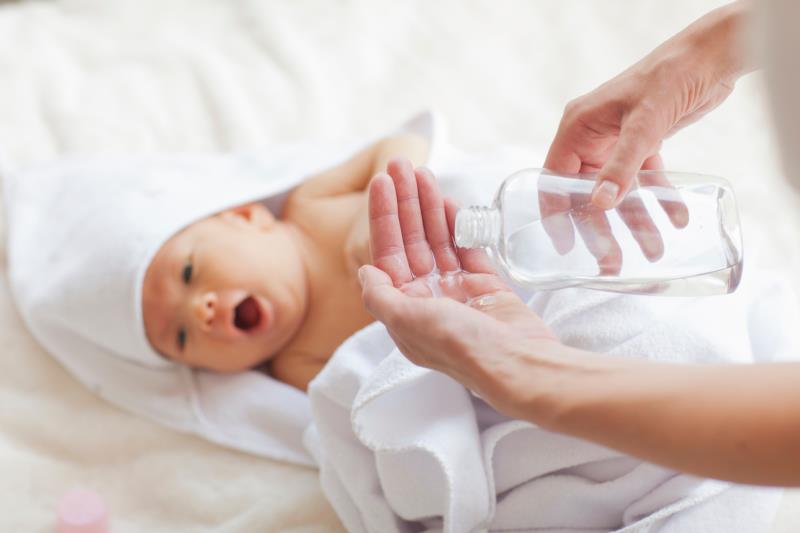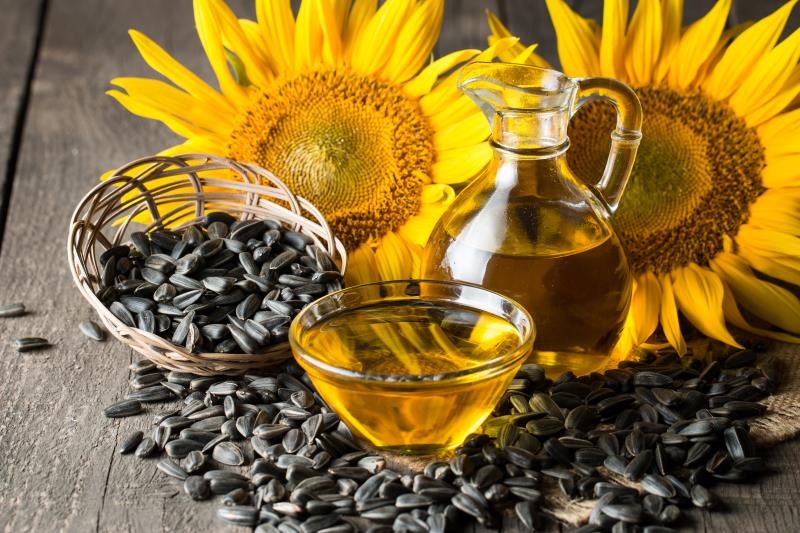
Repetitive, daily, high-frequency emollient therapy enhanced skin barrier integrity and function of premature and full-term neonates in communities with high relative humidity and temperature conditions, with sunflower seed oil (SSO) exhibiting a potential protective effect, according to a Nepalese study.
Premature infants have fragile and underdeveloped skin barriers, hence the increased risk for damage and infection. [Semin Neonatol 2000;5:273-280] Skincare-based interventions have emerged as essential strategies to improve survival especially in low-resource settings where high rates of neonatal death are observed. [Lancet 2005;365:891-900; Am J Perinatol 2012;29:649-656]
SSO more protective?
In Nepal, routine daily massages in newborns using mustard seed oil (MSO) are typical. [J Trop Pediatr 2005;51:82-86] “The vigorous, lengthy massages might increase transcutaneous acquisition of invasive environmental pathogens,” said the researchers. However, evidence shows that SSO may accelerate skin barrier recovery owing to its lipid profile. [Acta Paediatr 2002;91:546-554] “[This] may enhance skin barrier integrity and function by providing a physical barrier to infectious agents, essential stratum corneum fatty acids, and linoleic acid that may reduce epidermal inflammation,” said the researchers.
“[These] results provide a strong rationale for evaluating SSO in a community setting such as Nepal, where almost half of deliveries occur at home,” they added.
SSO was compared against MSO in 995 neonates, who were randomized 1:1 to receive daily full-body massage using either oil. Nearly 80 percent completed the 28-day follow up. [BMC Pediatr 2019;doi:10.1186/s12887-019-1871-2]
During the first week of life, skin maturation was faster with SSO than MSO as reflected by the rapid reduction in skin pH with the former, with a difference in mean daily reductions of 0.02 units/day (95 percent confidence interval [CI], 0.002–0.040). This suggests a faster acid mantle development, noted the researchers.
“An acidic environment is required for lipid metabolism, bilayer structure formation, desquamation, bacterial homeostasis, skin colonization, and inhibition of pathogenic bacteria,” explained the researchers. Therefore, the more rapid reduction in skin pH with SSO may signify its protective effect in this setting, they added.

Regarding changes in skin conditions however, mean scores in both arms similarly worsened from day 1 to 14 in terms of rash (from 0.16 to 0.97 [SSO] and 0.13 to 0.97 [MSO]) and erythema (from 0.48 to 0.72 and 0.46 to 0.74, respectively). However, similar improvements were observed at day 28 regardless of oil exposure (mean, 0.68 vs 0.66 for SSO and MSO, respectively [rash] and 0.46 vs 0.49, respectively [erythema]). Given the lack of control arm, the researchers attributed the initial skin worsening to oil use or the massage itself.
There was very little dryness/scaling observed in both arms at day 28 (mean, 0.011 vs 0 for SSO and MSO, respectively), which was in contrast with the findings of another trial wherein dryness was observed in more than half of infants at <33 weeks gestational age. [Pediatr Infect Dis J 2014;33:1124-1127] “[This] may result from the high relative humidity, consistently between 80 and 95 percent, an optimal range for filaggrin proteolysis to natural moisturizing factor that can increase skin hydration,” said the researchers.
Moreover, transepidermal water loss (TEWL) similarly increased in both arms over 28 days (ranging from 36 to 42 g/m2/hour [SSO] and 33 to 43 g/m2/hour [MSO]) which, according to the researchers, could be due to skin compromise (ie, rash, erythema). “Any true benefit of SSO on TEWL might have been obscured in high humidity conditions through the concomitant effects of sweating,” said the researchers.
Guide to more effective treatments
Taken together, the findings provide data on how different oils may facilitate skin barrier development and consequently protect infants in high-humidity, low-resource settings. The findings also underpin the influence of cultural practices and environmental conditions such as relative humidity and temperature, noted the researchers. “[Therefore,] these data … can help guide the development … of more effective treatments.”
However, the lack of a control arm comprising subjects unexposed to oil and/or massage might have limited the findings despite the large sample size and frequent measurements of skin integrity and function.
Moreover, the small fraction of extremely premature and preterm infants (n=14 and 54, respectively) might have limited the ability to determine the impact of different emollient therapies in the most underdeveloped skin, added the researchers. Further exploration is thus warranted to ascertain strategies that could facilitate barrier development in this setting.
Future trials should also look into specific biomarkers of innate immunity and blockage of eccrine glands by topical oils, as well as the influence of skin microflora and specific emollient composition on outcomes, said the researchers. The impact of routine, vigorous massages regardless of oil used should also be evaluated further, they added.